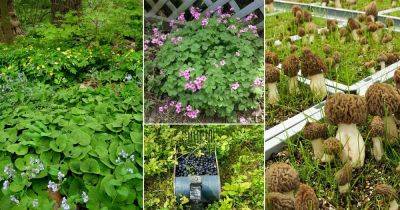Georgia, with its varied ecological landscapes, is an ideal place for wild plant enthusiasts. The state, from the mountains to the coast, primarily spans USDA Hardiness Zones 6b to 9a, with pockets of 6a in the mountainous regions and 9b in the coastal plains. This wide range of zones fosters an array of Wild Edible Plants in Georgia that you can also grow in the garden.
Let’s Go Wild!
24.07.2023 - 12:02 / hgic.clemson.edu
I read a recent article in Forbes magazine introducing a new book, Wild: The Naturalistic Garden by Noel Kingsbury. It nudged me to share a gardening concept that I have grown more passionate about as I have matured in horticulture. The idea is to introduce a little ‘wild’ into our home landscapes by adding native plants to improve environmental health.
Around 2000, I attended a professional landscape operations tour in the Baltimore and Washington area. One of the stops was a visit to the landscapes of Wolfgang Oehme and James van Sweden with the two men as our guides. During their careers, Oehme and van Sweden created naturalistic designs that minimized turfgrass and incorporated large swaths of perennials and grasses. Trees and shrubs were strategically placed to provide structure to the garden. Their landscape designs were captivating, and the experience forever changed my idea of a traditional home landscape. More recently, landscape designers Piet Oudolf and Claudia West & Thomas Ranier are creating naturalistic landscapes that seek to introduce the wild back into the built landscape.
Unfortunately, I cannot claim to have been a long-time proponent of gardening with nature in mind. By working with plants, I assumed I was a good environmental steward. Still, when I began my career, my main concern was making the landscape look nice. Other than knowing not to introduce invasive plant species, I had no concept of planting for environmental health.
In re-examining my relationship with ornamental horticulture during my career with Extension, I gained a greater appreciation for the ecological roles plants fill in the landscape. The Clemson University Cooperative Extension’s mission is to improve stewardship of natural
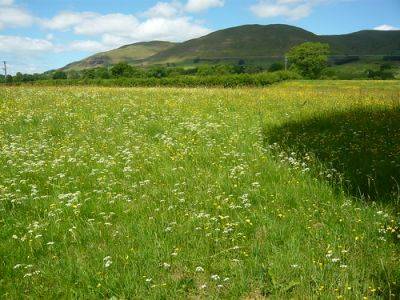
Wild Plant Habitat Classifications
Vegetation of open habitats can be an interesting form of study for the keen gardener. Knowing what grows where in the wild, inform us about our own harden habitats.
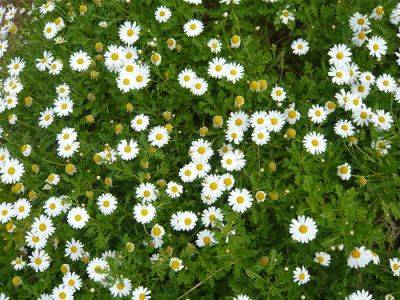
Wild Daisy Species
Native daisies are are normally white petaled with yellow florets/capitulum and come from one of the following families.

Bindweed Wild Flower Varieties
The bindweed family comprises of several varieties seen as wild flowers in the UK together with some other species including convolvulus and polygonum. They can be a nuisance in the garden with brittle roots that make them hard to eliminate.

Meadow Flowering Wild or semi-cultivated
One red poppy to add interest to this photo of a ‘sown’ wild garden. The effect is pleasing with the cornflowers just breaking into colour.

Let’s Face it: Proper Mask Hygiene
According to the Centers for Disease Control and Prevention (CDC), masks, along with proper hand hygiene and social distancing, are recommended to help prevent and slow the spread of the novel coronavirus (COVID-19). There are many different types of masks. Some masks are intended for single-use, and others, like cloth or fabric masks, can be reused. Proper mask hygiene is just as important as wearing a mask. Mask hygiene includes proper application and removal of your mask along with routine cleaning.
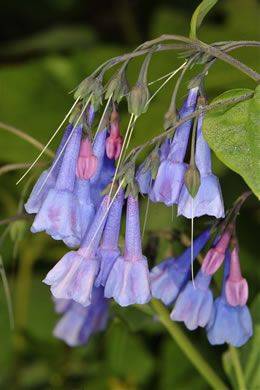
Spring Wildflowers
In springtime, the deciduous woodlands around us are beginning to awaken as the delicate flowers of spring ephemerals pierce the blanket of leaf litter. Most of these woodland plants are found in areas with rich, humusy soil and layer of deep leaf litter; they flower when the leaves are off the trees and light reaches the forest floor in spring. These diminutive plants are beautiful, but beyond this, they provide critical support for newly emerging spring bees. As temperatures warm, native solitary bees visit bloodroot, trout lily, spring beauty, Virginia bluebells, and other spring flowers to collect pollen or sip nectar. Some of these bees have a close or exclusive relationship with specific flowers, a fact recognized in their names: trout lily bee (Andrena erythronii) or the spring beauty bee(Andrena erigeniae). Trout lily bees visit more than just trout lily, but the latter relies exclusively on the pink pollen provided by spring beauty to provision their nests. However, many other bees visit this spring beauty too. In fact, 58 species of bees have been reported as visitors to this tiny pink flower. Similarly, bloodroot, trout lilies, and Virginia bluebells are visited by a diversity of bees, including bumblebees (Bombus spp.), little carpenter bees (Ceratina spp.), halictid bees (Halictus spp., Lasioglossum spp.), and mason bees (Osmia spp.). Clearly, these spring ephemerals are of considerable importance to the survival of many spring bee species, a fact we rarely consider when we admire their flowers.
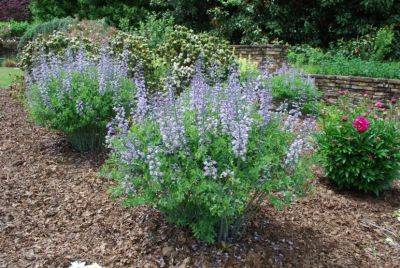
Wild or False Indigo
Wild or false indigo (Baptisia species) is the perfect Mother’s Day gift, whether your Mom is a newbie, seasoned green-thumber, or someone who simply enjoys flowers that come back year after year around Mother’s Day. These gorgeous herbaceous perennials are native to the eastern U.S. and comprise 20 species and naturally occurring hybrids that produce spikes of pealike flowers that come in blue, white, yellow, purple, and pink.
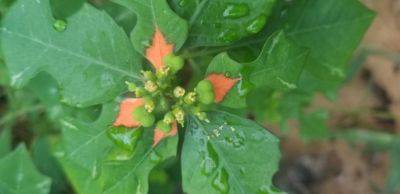
Weed of the Month – Wild Poinsettia / Desert Poinsettia
This North American native plant is a relative of the popular holiday poinsettia. Both plants are members of the euphorbia family. This plant is sometimes grown for the colorful green and orange bracts, but it is considered a weed.

An Ecology of Spring Wildflowers
Spring wildflowers are garden stars in the wooded area of South Carolina Botanical Garden’s Natural Heritage Trail from February to May. The spring herbaceous layer is exceptionally diverse in environments with rich soils containing lots of organic material. Every day something new appears in the landscape!

Weed of the Month – Wild Garlic
Wild garlic (Allium vineale) is a winter, perennial weed that looks like a clump of blue-green grass. Native to Europe and east Asia, this weed is commonly found throughout the Southeast. It was brought to North America in soil used as ballast weight in sailboats. The dirt would be removed, and cargo would take its place on return journeys to Europe.

Common Violets, a Beautiful Treasure
If your garden is anything like mine at this time of year, it is peppered with these beautiful little treasures: common violets (Viola sororia). These blue, purple, and sometimes almost white, small flowers return yearly to brighten my flower beds, lawn, and even the crack in my concrete stairs. Still, I have never once intentionally planted one! My curiosity was piqued as I sat on my front porch looking at this bounty that I did nothing to deserve.
